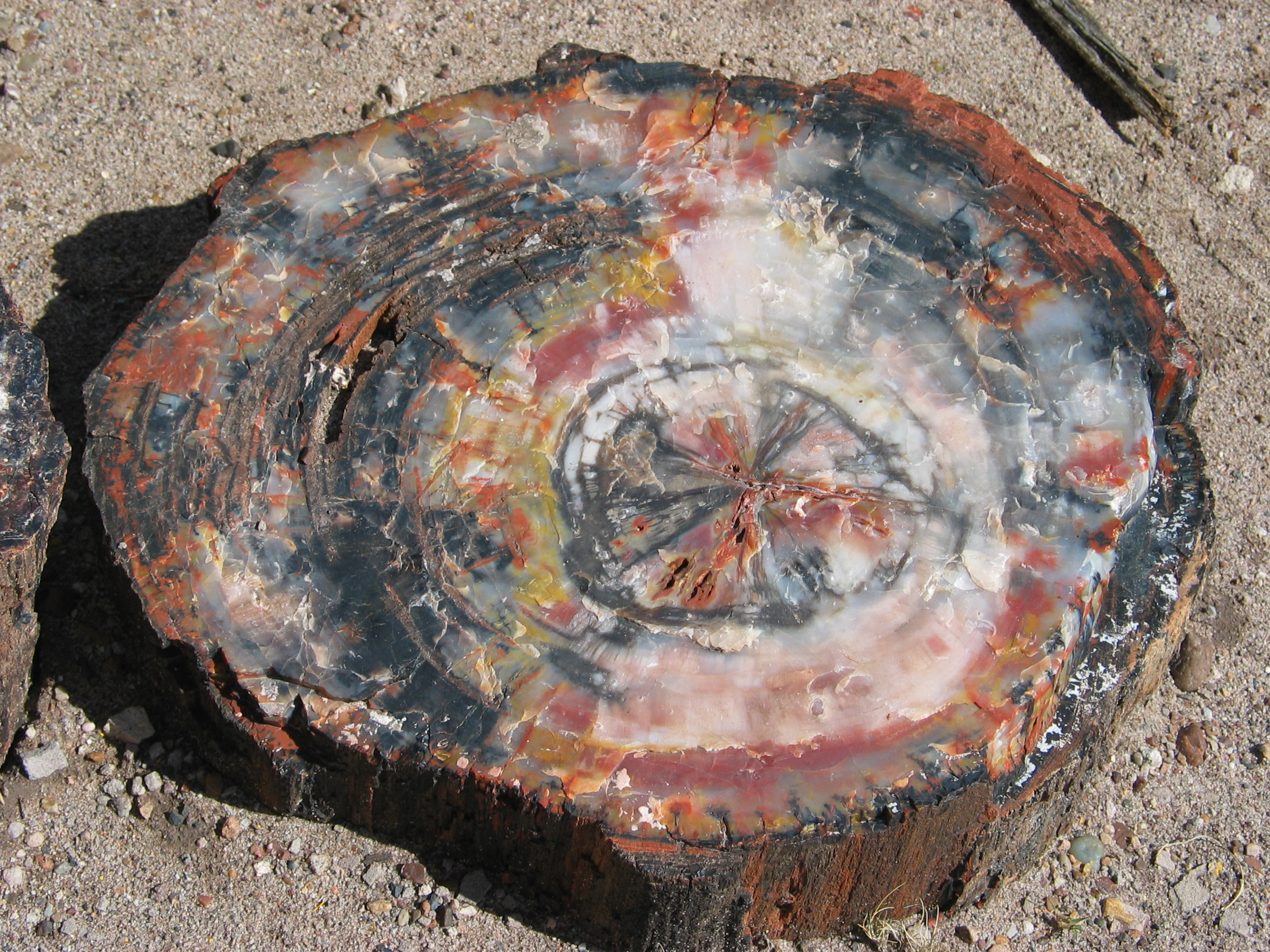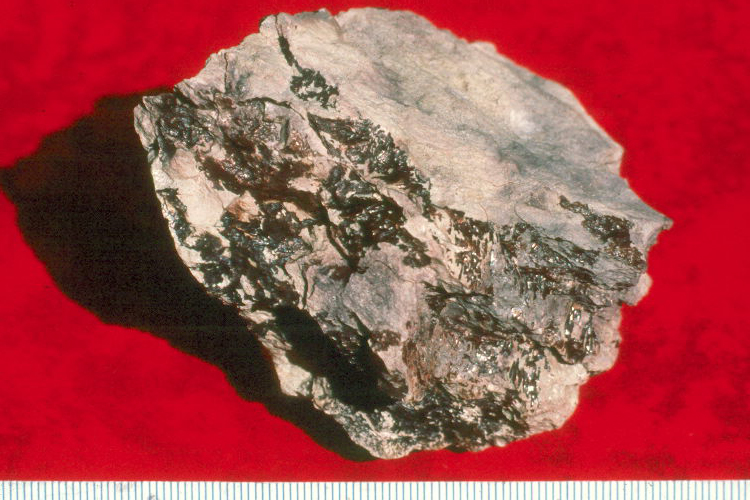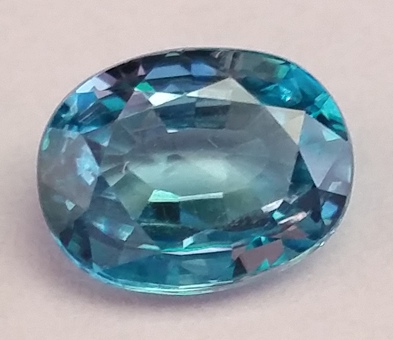|
Cherokee Ranch Petrified Forest
A large Petrified wood, petrified forest thought to date to the Paleocene at around 55 million years old is located on and around the grounds of Cherokee Ranch in Douglas County, Colorado. These Denver Basin fossils include plants similar to the modern Lauraceae, laurel tree family. At least 40 large petrified logs have been discovered on the Cherokee Ranch property; the castle on the ranch site includes more than 4,000 pieces of petrified wood in its construction. Discovery Newspaper reporter Fitz Hugh Ludlow attested to a Petrified wood, petrified forest in the Daniels Park area in the 1860s. Later, the 1920s-built castle on modern-day Cherokee Ranch would incorporate over 4,000 pieces of petrified wood into its construction, alongside locally sourced rhyolite. However, the significant number of large petrified logs were not identified in the area until some years later. Prior to her 1999 death, Tweet Kimball had arranged for her property at Cherokee Ranch to be preserved, inclu ... [...More Info...] [...Related Items...] OR: [Wikipedia] [Google] [Baidu] |
Petrified Wood From Cherokee Ranch Forest (cropped)
In geology, petrifaction or petrification () is the process by which organic material becomes a fossil through the replacement of the original material and the filling of the original pore spaces with minerals. Petrified wood typifies this process, but all organisms, from bacteria to vertebrates, can become petrified (although harder, more durable matter such as bone, beaks, and shells survive the process better than softer remains such as muscle tissue, feathers, or skin). Petrification takes place through a combination of two similar processes: permineralization and replacement. These processes create replicas of the original specimen that are similar down to the microscopic level. Processes Permineralization One of the processes involved in petrifaction is permineralization. The fossils created through this process tend to contain a large amount of the original material of the specimen. This process occurs when groundwater containing dissolved minerals (most commonly ... [...More Info...] [...Related Items...] OR: [Wikipedia] [Google] [Baidu] |
Eocene
The Eocene ( ) is a geological epoch (geology), epoch that lasted from about 56 to 33.9 million years ago (Ma). It is the second epoch of the Paleogene Period (geology), Period in the modern Cenozoic Era (geology), Era. The name ''Eocene'' comes from the Ancient Greek (''Ēṓs'', 'Eos, Dawn') and (''kainós'', "new") and refers to the "dawn" of modern ('new') fauna that appeared during the epoch.See: *Letter from William Whewell to Charles Lyell dated 31 January 1831 in: * From p. 55: "The period next antecedent we shall call Eocene, from ήως, aurora, and χαινος, recens, because the extremely small proportion of living species contained in these strata, indicates what may be considered the first commencement, or ''dawn'', of the existing state of the animate creation." The Eocene spans the time from the end of the Paleocene Epoch to the beginning of the Oligocene Epoch. The start of the Eocene is marked by a brief period in which the concentration of the carbon isoto ... [...More Info...] [...Related Items...] OR: [Wikipedia] [Google] [Baidu] |
Late Cretaceous
The Late Cretaceous (100.5–66 Ma) is the more recent of two epochs into which the Cretaceous Period is divided in the geologic time scale. Rock strata from this epoch form the Upper Cretaceous Series. The Cretaceous is named after ''creta'', the Latin word for the white limestone known as chalk. The chalk of northern France and the white cliffs of south-eastern England date from the Cretaceous Period. Climate During the Late Cretaceous, the climate was warmer than present, although throughout the period a cooling trend is evident. The tropics became restricted to equatorial regions and northern latitudes experienced markedly more seasonal climatic conditions. Geography Due to plate tectonics, the Americas were gradually moving westward, causing the Atlantic Ocean to expand. The Western Interior Seaway divided North America into eastern and western halves; Appalachia and Laramidia. India maintained a northward course towards Asia. In the Southern Hemisphere, Aus ... [...More Info...] [...Related Items...] OR: [Wikipedia] [Google] [Baidu] |
MDPI
MDPI (Multidisciplinary Digital Publishing Institute) is a publisher of open-access scientific journals. It publishes over 390 peer-reviewed, open-access journals. MDPI is among the largest publishers in the world in terms of journal article output, and is the largest publisher of open access articles. It was founded by Shu-Kun Lin as a chemical sample archive. Between 2016 and 2020, the number of peer-reviewed papers published by MDPI grew significantly, with year-over-year growth of over 50% in 2017, 2018 and 2019, attracting attention to their very fast article processing times. In a review of 26 open-access "mega-journals" that published over 3,500 papers in 2022, 11 (42%) of the journals were from MDPI. Besides launching its own journals, MDPI has acquired journals from other publishers, such as ''Tomography'' from Grapho Publications in 2021, and ''Nursing Reports'' and ''Audiology Research'' from PagePress Publications in 2020. As of January 2024, MDPI publishes 433 aca ... [...More Info...] [...Related Items...] OR: [Wikipedia] [Google] [Baidu] |
List Of MDPI Academic Journals
This is a list of academic journals published by MDPI. As of September 2022, MDPI publishes 399 peer-reviewed academic journals and nine conference journals. {, class="wikitable sortable" , +List of MDPI journals !Journal name !Subject !Established !ISSN , - , ''Acoustics'' , Engineering , 2019 , 2624-599X , - , ''Actuators'' , Engineering , 2012 , 2076-0825 , - , ''Administrative Sciences'' , Business , 2011 , 2076-3387 , - , ''Adolescents'' , Health , 2021 , 2673-7051 , - , ''Advances in Respiratory Medicine'' (formerly ''Pneumonologia i Alergologia Polska)'' , Health , , 2451-4934 , - , ''Aerospace'' , Engineering , 2014 , 2226-4310 , - , ''Agriculture'' , Agriculture , 2011 , 2077-0472 , - , ''AgriEngineering'' , Agriculture , 2019 , 2624-7402 , - , ''Agronomy'' , Agriculture , 2011 , 2073-4395 , - , ''AI'' , Computers , 2020 , 2673-2688 , - , ''Algorithms'' , Mathematics , 2008 , 1999-4893 , - , ''Allergies'' , Medicine , 2021 , 2313-5786 , - , ''Alloys'' , Engineering ... [...More Info...] [...Related Items...] OR: [Wikipedia] [Google] [Baidu] |
Branch
A branch, also called a ramus in botany, is a stem that grows off from another stem, or when structures like veins in leaves are divided into smaller veins. History and etymology In Old English, there are numerous words for branch, including , , , and . There are also numerous descriptive words, such as (that is, something that has bled, or 'bloomed', out), (literally 'little bough'), (literally 'on growth'), and (literally 'offspringing'). Numerous other words for twigs and boughs abound, including , which still survives as the ''-toe'' in ''mistletoe''. Latin words for branch are or . The latter term is an affix found in other modern words such as '' cladodont'' (prehistoric sharks with branched teeth), ''cladode'' (flattened leaf-like branches), or ''cladogram'' (a branched diagram showing relations among organisms). Woody branches Large branches are known as boughs and small branches are known as twigs. The term ''twig'' usually refers to a terminus, while ''bou ... [...More Info...] [...Related Items...] OR: [Wikipedia] [Google] [Baidu] |
Arkose
Arkose () or arkosic sandstone is a detrital sedimentary rock, specifically a type of sandstone containing at least 25% feldspar. Arkosic sand is sand that is similarly rich in feldspar, and thus the potential precursor of arkose. Components Quartz is commonly the dominant mineral component, and some mica is often present. Apart from the mineral content, rock fragments may also be a significant component. Arkose usually contains small amounts of calcite cement, which causes it to effervesce (fizz) slightly in dilute hydrochloric acid; sometimes the cement also contains iron oxide. Colouration and presence of fossils Arkose is typically grey to reddish in colour. The sand grains making up an arkose may range from fine to very coarse, but tend toward the coarser end of the scale. Fossils are rare in arkose, due to the depositional processes that form it, although bedding is frequently visible. Formation process Arkose is generally formed from the weathering of feldspar-rich igne ... [...More Info...] [...Related Items...] OR: [Wikipedia] [Google] [Baidu] |
Matrix (geology)
The matrix or groundmass of a rock (geology), rock is the grain size, finer-grained mass of material in which larger grains, crystals, or clastic rock, clasts are embedded. The matrix of an igneous rock consists of finer-grained, often microscopic scale, microscopic, crystals in which larger crystals, called phenocrysts, are embedded. This porphyritic texture (geology), texture is indicative of multi-stage cooling of magma. For example, porphyritic andesite will have large phenocrysts of plagioclase in a fine-grained matrix. Also in South Africa, diamonds are often mined from a matrix of weathering, weathered clay-like rock (kimberlite) called "yellow ground". The matrix of sedimentary rocks is finer-grained sedimentary material, such as clay or silt, in which larger grains or clasts are embedded. It is also used to describe the rock material in which a fossil is embedded. Cementation All sediments are at first in an incoherent condition (e.g. sands, clays and gravels, beds of ... [...More Info...] [...Related Items...] OR: [Wikipedia] [Google] [Baidu] |
University Of Wyoming
The University of Wyoming (UW) is a Public university, public land-grant university, land-grant research university in Laramie, Wyoming, United States. It was founded in March 1886, four years before the territory was admitted as the 44th state, and opened in September 1887. The University of Wyoming's location is written into the state's constitution. The university also offers outreach education in communities throughout Wyoming and online. The University of Wyoming consists of seven colleges: agriculture and natural resources, arts and sciences, business, education, engineering and applied sciences, health sciences, and University of Wyoming College of Law, law. The university offers over 120 undergraduate, graduate, and certificate programs including Doctor of Pharmacy and Juris Doctor. It is Carnegie Classification of Institutions of Higher Education, classified among "R1: Doctoral Universities – Very High research activity". In addition to on-campus classes in Laramie, t ... [...More Info...] [...Related Items...] OR: [Wikipedia] [Google] [Baidu] |
Paleosol
In Earth science, geoscience, paleosol (''palaeosol'' in Great Britain and Australia) is an ancient soil that formed in the past. The definition of the term in geology and paleontology is slightly different from its use in soil science. In geology and paleontology, a paleosol is a former soil preserved by burial underneath either sediments (alluvium or loess) or volcanic deposits (lava flows or volcanic ash), which in the case of older deposits have Lithification, lithified into Rock (geology), rock. In Quaternary geology, sedimentology, paleoclimatology, and geology in general, it is the typical and accepted practice to use the term "paleosol" to designate such "''fossil soils''" found buried within sedimentary and volcanic deposits exposed in all continents. In soil science the definition differs slightly: paleosols are soils formed long ago that have no relationship in their chemical and physical characteristics to the present-day climate or vegetation. Such soils are found ... [...More Info...] [...Related Items...] OR: [Wikipedia] [Google] [Baidu] |
Zircon
Zircon () is a mineral belonging to the group of nesosilicates and is a source of the metal zirconium. Its chemical name is zirconium(IV) silicate, and its corresponding chemical formula is Zr SiO4. An empirical formula showing some of the range of substitution in zircon is (Zr1–y, REEy)(SiO4)1–x(OH)4x–y. Zircon precipitates from silicate melts and has relatively high concentrations of high field strength incompatible elements. For example, hafnium is almost always present in quantities ranging from 1 to 4%. The crystal structure of zircon is tetragonal crystal system. The natural color of zircon varies between colorless, yellow-golden, red, brown, blue, and green. The name derives from the Persian ''zargun'', meaning "gold-hued". This word is changed into " jargoon", a term applied to light-colored zircons. The English word "zircon" is derived from ''Zirkon'', which is the German adaptation of this word. Yellow, orange, and red zircon is also known as " hyacint ... [...More Info...] [...Related Items...] OR: [Wikipedia] [Google] [Baidu] |






